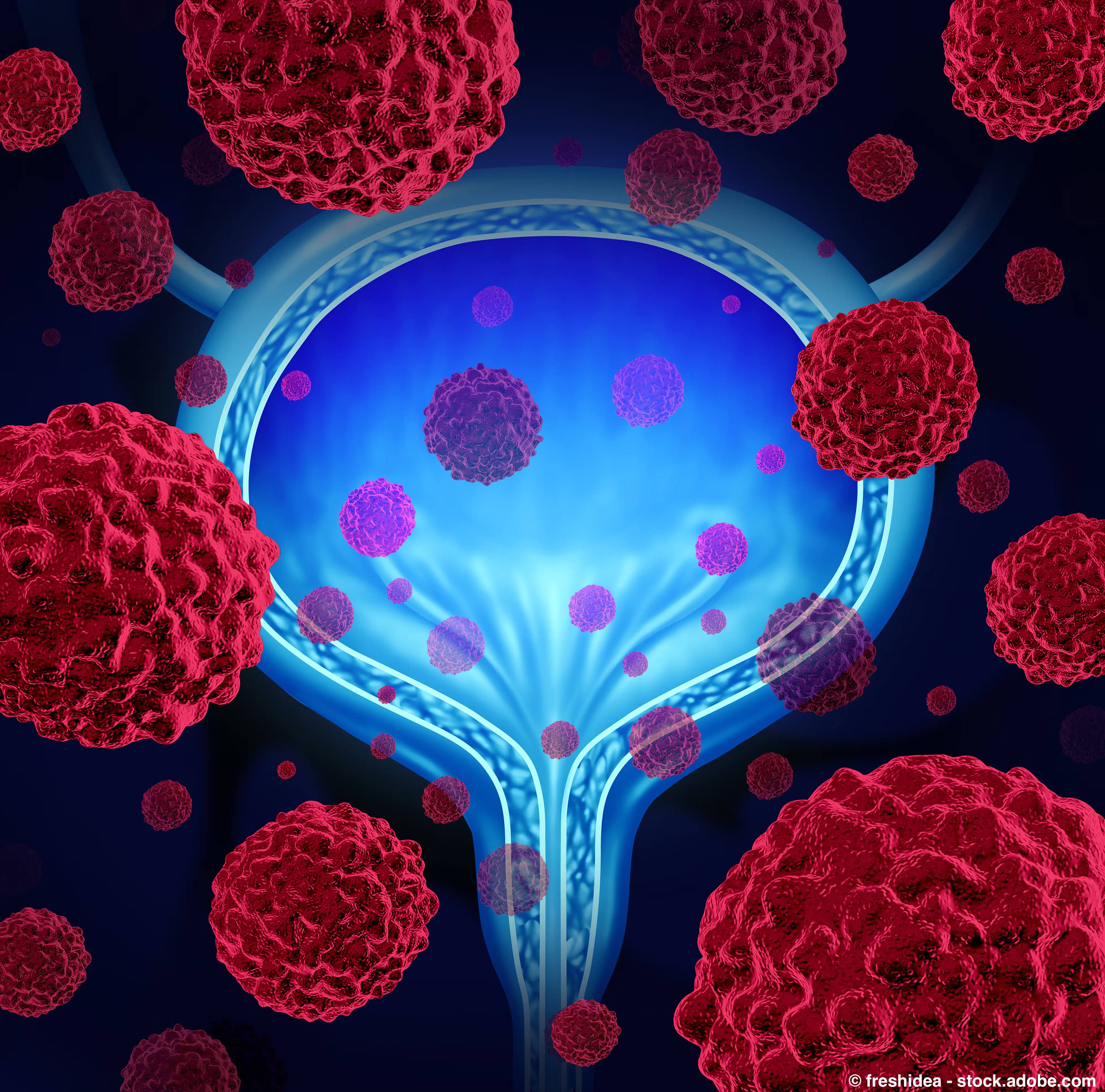Article
New Chemotherapy Combination Offers Improved Outcomes in Bladder Cancer
Author(s):
Patients with muscle-invasive bladder cancer who were treated with a dose-dense regimen of neoadjuvant chemotherapy followed by radical cystectomy (surgery to remove the urinary bladder) experienced more complete responses to treatment compared with the current standard of neoadjuvant chemotherapy.
Patients with muscle-invasive bladder cancer who were treated with a dose-dense regimen of neoadjuvant chemotherapy followed by radical cystectomy (surgery to remove the urinary bladder) experienced more complete responses to treatment compared with the current standard of neoadjuvant chemotherapy, according to study results published in JAMA Oncology.
Use of neoadjuvant chemotherapy with gemcitabine with cisplatin is standard; however, its adoption and routine use as a neoadjuvant chemotherapy has been modest. In turn, this dose-dense regimen — which contains a combination of methotrexate, vinblastine, doxorubicin and cisplatin (ddMVAC) – has been adopted in several institutions.
Meanwhile, previous phase 2 studies have demonstrated ddMVAC to yield similar response rates and better tolerability than treatment with gemcitabine and cisplatin, making it an attractive option in the treatment landscape. However, few studies have been conducted comparing the survival outcomes found with the different neoadjuvant chemotherapy regimens.
So, a team from the H. Lee Moffitt Cancer Center and Research Institute in Tampa, Florida, evaluated rates and the association of any downstaging, complete response and overall survival with neoadjuvant ddMVAC compared with gemcitabine and cisplatin.
They began by reviewing the medical records of 1,113 patients with bladder cancer who underwent a cystectomy at the Moffit Cancer Center between January 2007 and May 2017, of which 824 had muscle-invasive bladder cancer. The majority of patients were white (94.4 percent), male (77.4 percent) and a median age of 67 years.
In total, 332 (40.3 percent) patients received neoadjuvant chemotherapy, including 204 who received gemcitabine-cisplatin (61.4 percent), 32 who received gemcitabine-carboplatin (10 percent), 46 who received ddMVAC (14 percent) and 50 patients who received other agents, such as etoposide, fluorouracil and paclitaxel regimens (15.1 percent).
A control group of 329 patients who received surgery alone was included, so that their downstaging and survival rates could be compared to those who received chemotherapy in addition to surgery.
After a cross-sectional analysis of patient data, researchers saw a complete response rate of 41.3 percent in patients who received an average of 3.3 cycles of ddMVAC compared with just 24.6 percent in patients who received an average of 3.7 cycles of gemcitabine-cisplatin.
Downstaging rates — or the reduction of a cancer’s stage to a less threatening one – were also highest in the group of patients who received ddMVAC, at 52.2 percent, compared to 41.3 percent in the group that received gemcitabine-cisplatin.
Additionally, the researchers found that patients treated with ddMVAC had higher survival rates than those treated with other regimens, although those findings did not reach statistical significance. Because of this fact — and relatively small size of the ddMVAC group in this study – the authors noted that further comparative studies are needed to provide more information on the survival benefits offered by ddMVAC treatment over traditional neoadjuvant chemotherapy regimens.




